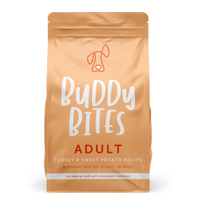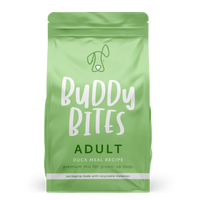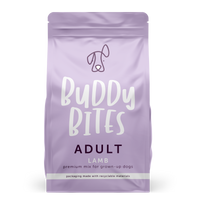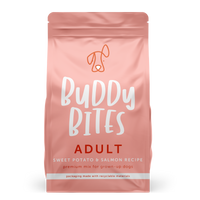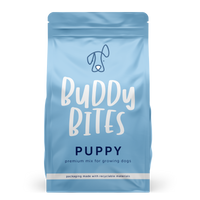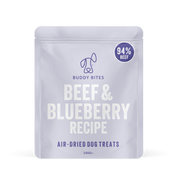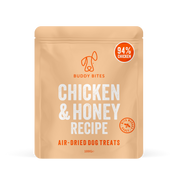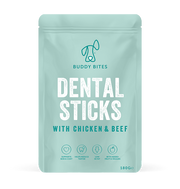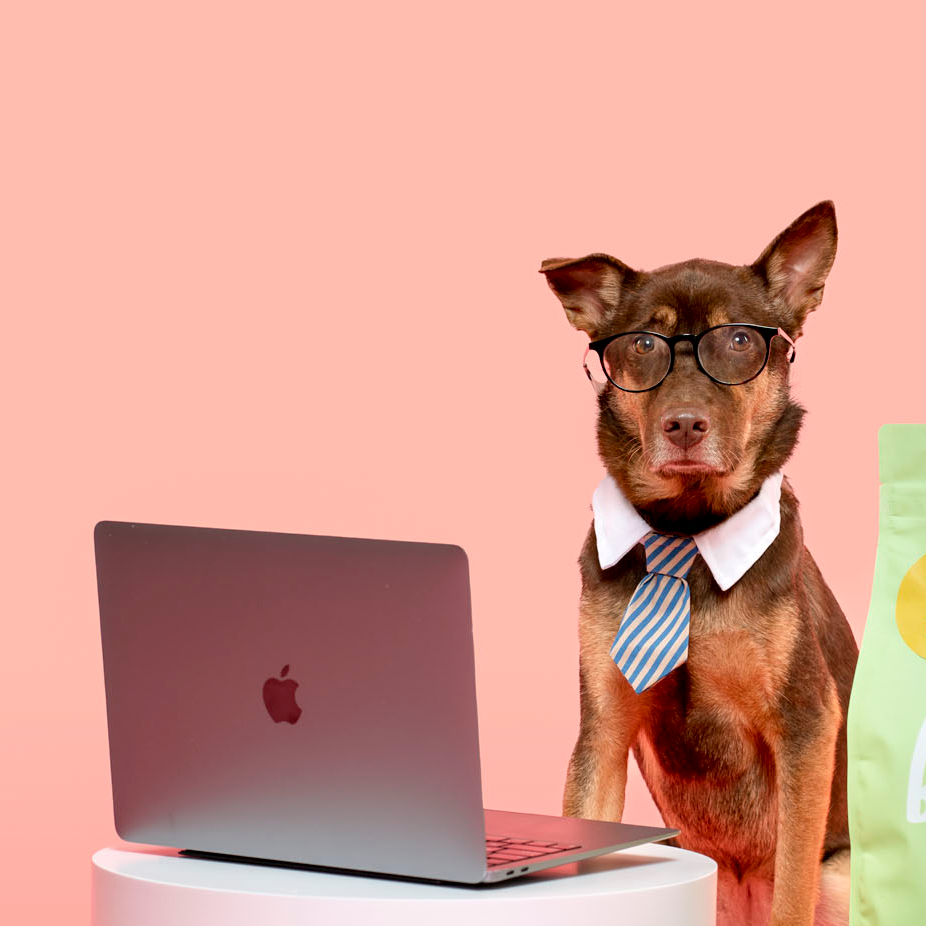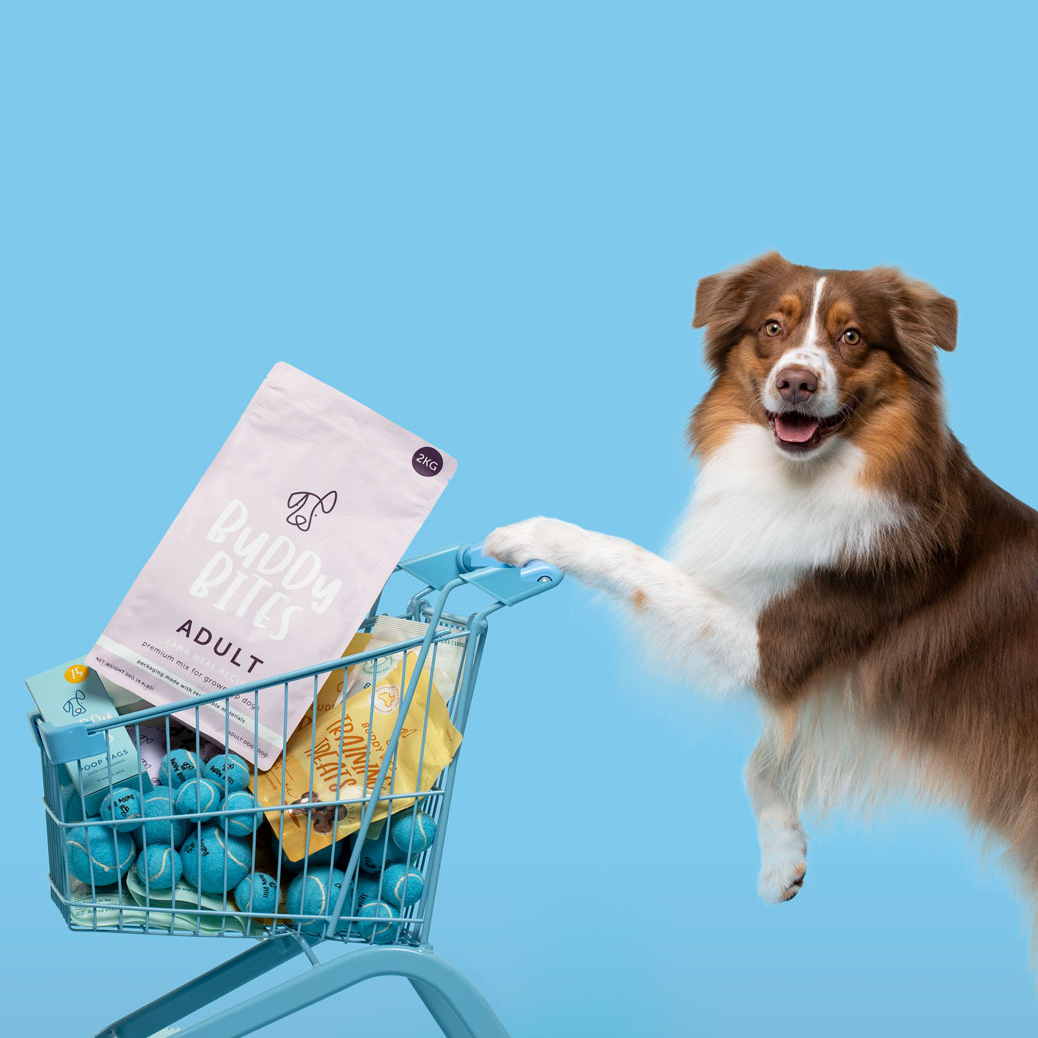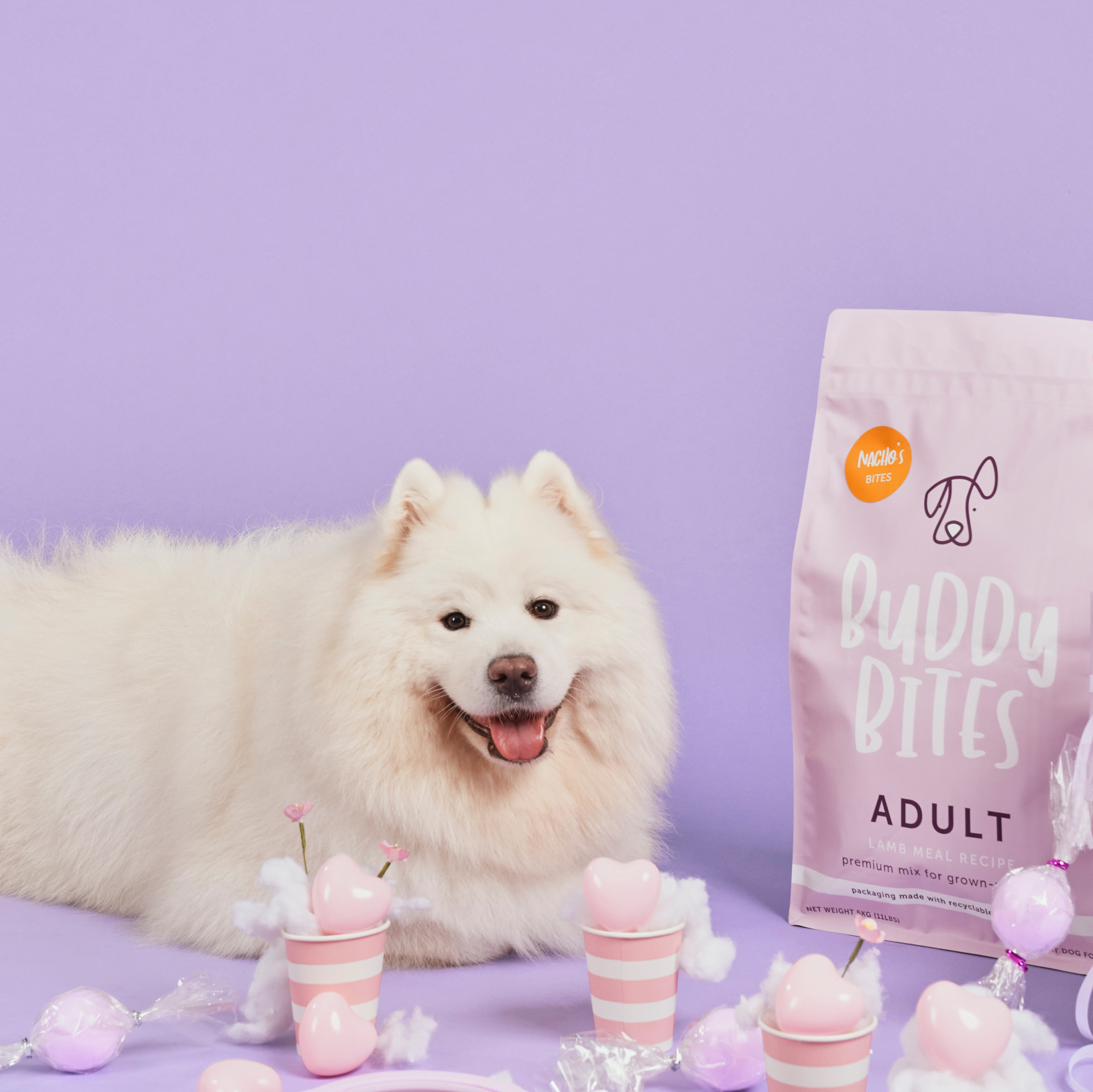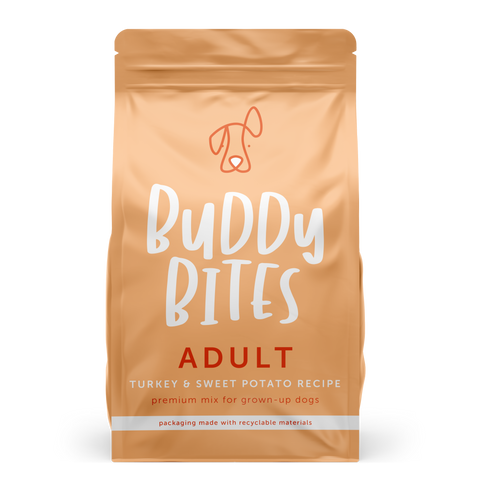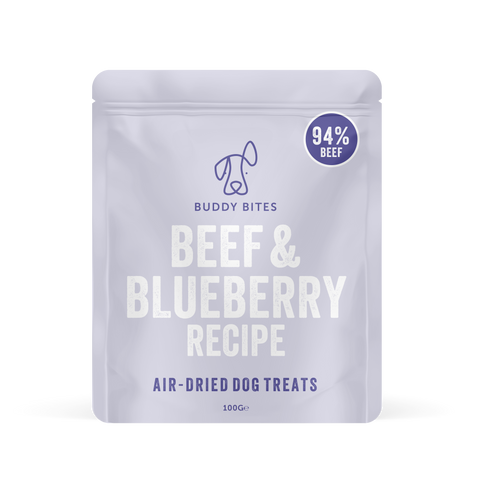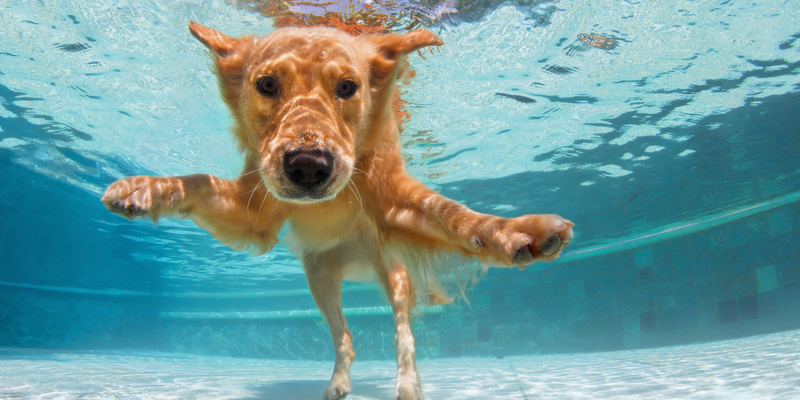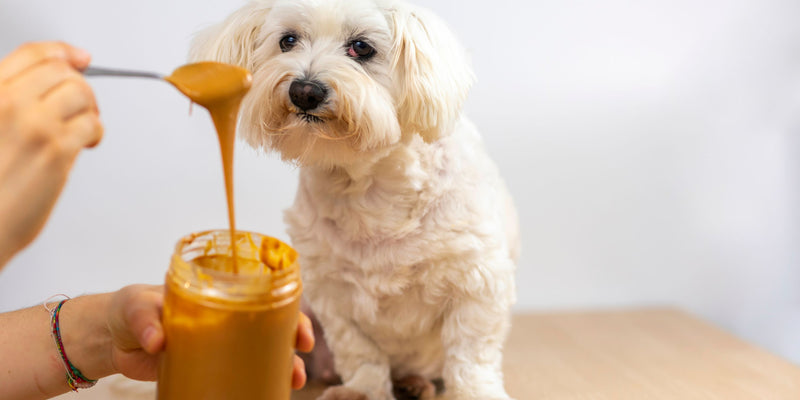4 Things to Look Out For & 3 Things To Do About Dog Heat Exhaustion
March 20, 2022
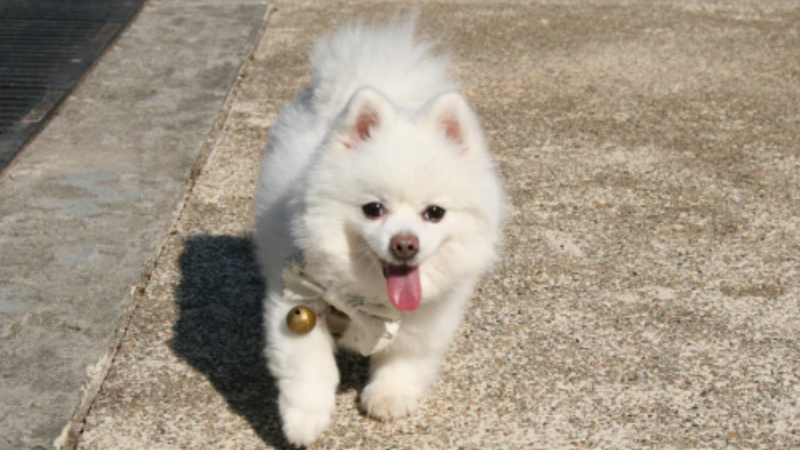
Hong Kong summers are notoriously hot and humid. With the weather turning warmer as we come into Spring, now’s the time to brush up on your knowledge on how to best look after your dog during the hotter seasons.
The team at Buddy Bites has created a cheat sheet to help you spot what to look out for heat exhaustion and what heatstroke may look like, so you can provide the best care for your dog if they ever overheat.
Why is it important? Because heat exhaustion happens more often than you think. Each summer and even in the lead-up to the hottest season of the year, many pets (cats included) pass away from heatstroke. It is very serious and yet completely avoidable.
Just think, if you were a dog…covered in layers of fur and paw pads burning on hot concrete smack bang in the middle of the day when the sun is out and shining in full glory.
Before we share what to do, here are some things for dog parents to bear in mind first:
- Brachycephalic Breeds.
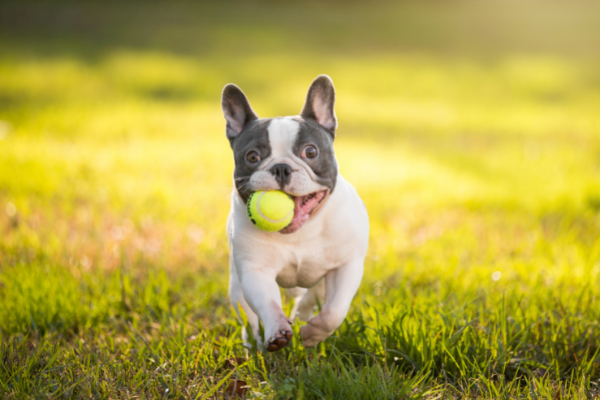
Is your dog born a bulldog, Frenchie, Shih Tzu, Pekingese or Pug? Brachycephalic breeds are dogs born with flattened faces. I.e. a Short-muzzled dog that has more difficulty breathing to cool down than normal long-snouted dogs, affecting the amount of exercise and play they can experience within a timeframe. These dogs find it more difficult to release heat from their body.
- Furry Breeds

There are a number of dogs that have particularly thick and heavy coats of fur. Think — Huskies, Pomeranians, and Golden Retrievers. It would be like wearing a triple-layered fur coat while lying on the ground and receiving heat from both the bottom and the top while you’re caught in between. Uncomfortable to say the least. What can you do? Trim their fur, take them out for short bursts, and avoid the sun at noontime.
- Dog Bags & Carriers

In a city that still holds some limitations on dog-friendly places, Hong Kong has fast gained the need for pet bags or carriers. Small-sized apartments have meant that there are a great number of smaller-sized dogs, which are easily carryable and transported within some places such as select shopping malls. But if you are not indoors under the coolness of air conditioning, beware of heat building up inside carriers as heat easily gets trapped. This would be the equivalent of humans jumping into a roasting hot car that builds up steamy heat while being parked out in the sun. So, minimise the time your dogs stay inside their carriers.
- Mad Dogs and Englishmen Go Out in the Midday Sun

There’s a reason dogs are said to go mad if you take them out during the day out under the full force of the midday sun — it’s barking hot! With cement paved most of the way in this concrete jungle, it is simply too hot for your doggo to be out and about. This material absorbs and stores heat, which can burn the pads of your dog’s paws. Add to that, if it were you walking outside walking barefoot in a fur coat — you wouldn’t want to walk outside in the sun too.
The Heat Exhaustion and Heatstroke Cheat Sheet
Signs to Watch Out For:
- Mouth

Humans and pets are made up differently. Where humans sweat to cool down, dogs do not. Instead, they cool off by panting to get rid of hot air and inhale cool air, and get rid of heat via their paw pads and through their nose. This is not as effective as humans, and so dogs are much more prone to heat exhaustion. Excessive salivation may occur, plus vomiting or experiencing red or purple gums and tongues.
- Eyes
Your dog may have eyes that look glazed over or unfocused. What does this look like? More specifically, it looks like you’re glassy-eyed. They may also be red and pupils could also be dilated.
- Heart
Your dog may be breathing heavily with a fast pace and irregular beat. Time your dog’s breathing with a timer if you’re unsure if it’s irregular or if his/her breathing seems faster than normal.
- Legs & Body
Your dog may experience a lack of coordination in its leg muscles and could stagger or collapse. Their body may also feel particularly hot.
Other signs to look for depending on the stage of a heatstroke’s effect include:
- Sluggishness from decreased energy
- Lack of appetite
- Vomiting
- Diarrhoea
- Muscle tremors or seizures
- Unconsciousness
What To Do
- Cool Water

It is important never to use cold or freezing water because this can shock a dog’s system. Use tepid water and place it where it is easily accessible. Your dog may be too weak or uncoordinated to walk across the room to their bowl, so place it right by them so they can take sips whenever they need to. You can also soak their fur with water at the same temperature, so they can start to feel some coolness against their skin.
- Shade & Airflow

Make sure your dog has access to ventilation. They will be feeling especially hot, so you want to ease their breathing with increased airflow, be it air conditioning, a fan, or both. Place your dog in a cool shaded area that is not in direct sunlight, so they can cool down as much as possible.
- Vet Check

Avoid unseen complications and take your dog to the vet. Even if symptoms look like they are getting better there could be underlying issues you may not be able to see with the naked eye. Some dogs may need to be put on intravenous fluid (IV) and your vet may need to do other tests. Get the all-clear and go to your closest vets.
Remember, consequences are often irreversible, so implement the best practices for your dog(s) to avoid organ failure from damage caused by long-term exposure and to continue to keep them by our side.
So the next time you think it’s a glorious day to take your dog on one of Hong Kong’s beautiful hikes, think twice before you decide to take your furry friends with you. How much sun and heat will they be exposed to throughout the day — is there any shade, do you have enough water to cool them down, do you have a cooling vest? Or would they be better off at home cooling off?
